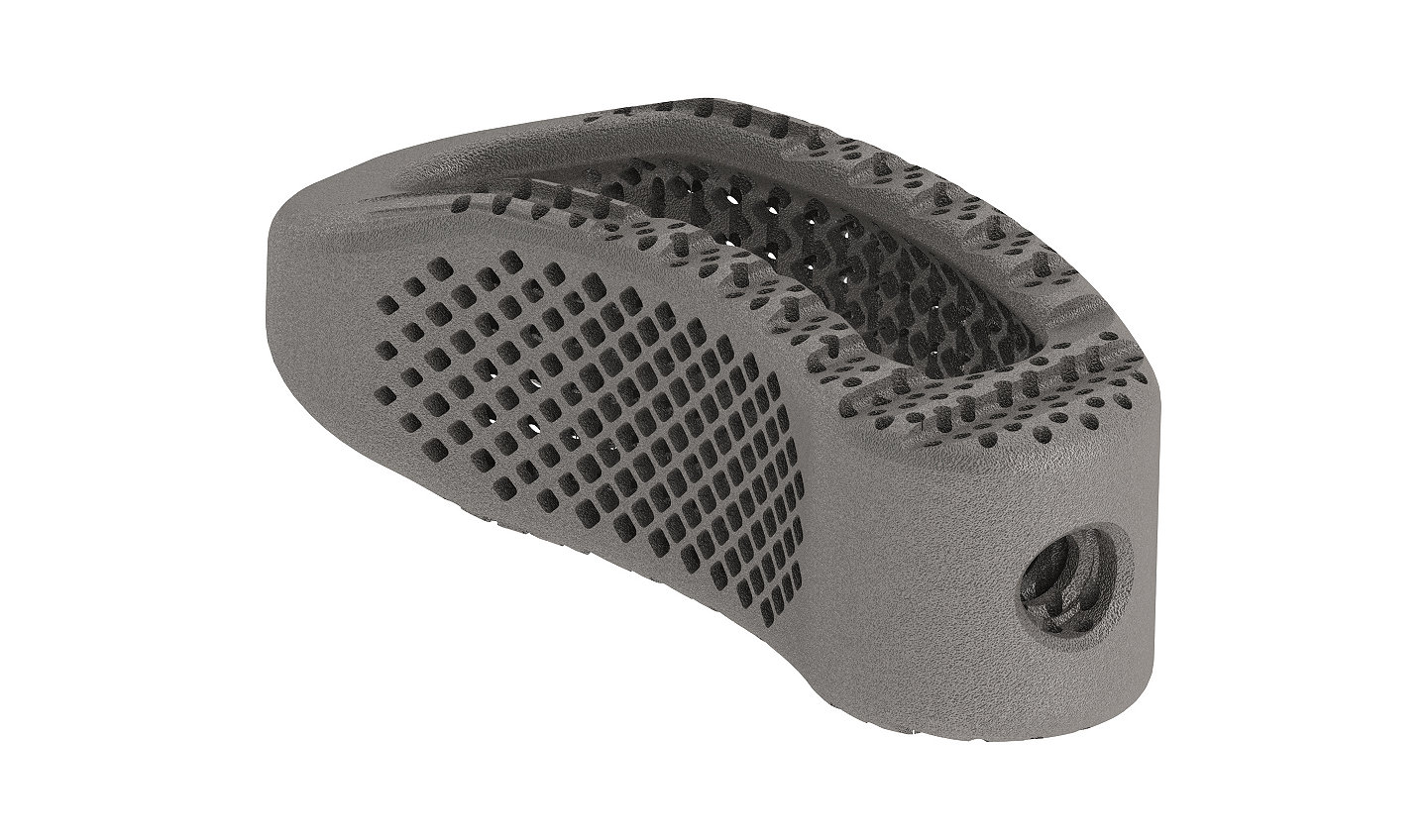Cascadia TL 3D
Interbody System
The Cascadia TL 3D Interbody System includes a full range of implant sizes carefully designed to accommodate the vertebral anatomy. The streamlined instrumentation is designed to aid in consistent and accurate implant placement. Lamellar 3D Titanium Technology incorporates 300-500 um longitudinal channels, which in conjunction with transverse windows, create an interconnected lattice designed to allow for bony integration. [1,2]

Features
- Roughened titanium surfaces have been shown to demonstrate increased protein expression in contrast to smooth titanium surfaces3,4,5
- Lamellar 3D titanium interbody with approximately 70% porosity1
- Reverse hourglass design allows for a large graft volume1
- Bulleted nose to ease insertion1
- 3-5 μm surface roughness to allow for direct bony ongrowth1,2
References:
- Test Report TR-1220.
- Loh QL and Choong C. “Three-dimensional scaffolds for tissue-engineering applications: Role of porosity and pore size.” Tissue Engineering Part B 19 (2013): 485-502.
- Karande TS, Kaufmann JM, and Agrawal CM. “Chapter 3: Functions and Requirements of Synthetic Scaffolds in Tissue Engineering.” Nanotechnology and Regenerative Engineering: The Scaffold, Second Edition. Ed. CT Laurencin and LS Nair. Boca Raton: CRC Press, 2014. Pages 63-102.
- Bobyn JD, Pilliar RM, Cameron HU, and Weatherly GC. “The optimum pore size for the fixation of porous-surfaced metal implants by the ingrowth of bone.” Clinical Orthopaedics and Related Research 150 (1980): 263-270.
- Karageorgiou V and Kaplan D. “Porosity of 3D biomaterials scaffolds and osteogenesis.” Biomaterials 26 (2005): 5474-5491.
PRTTL-WB-13_Rev-1_23972
